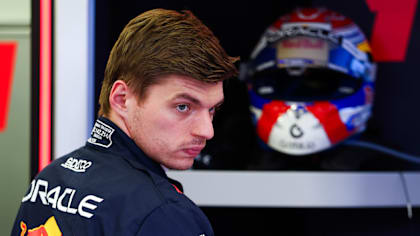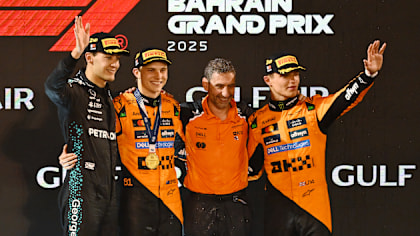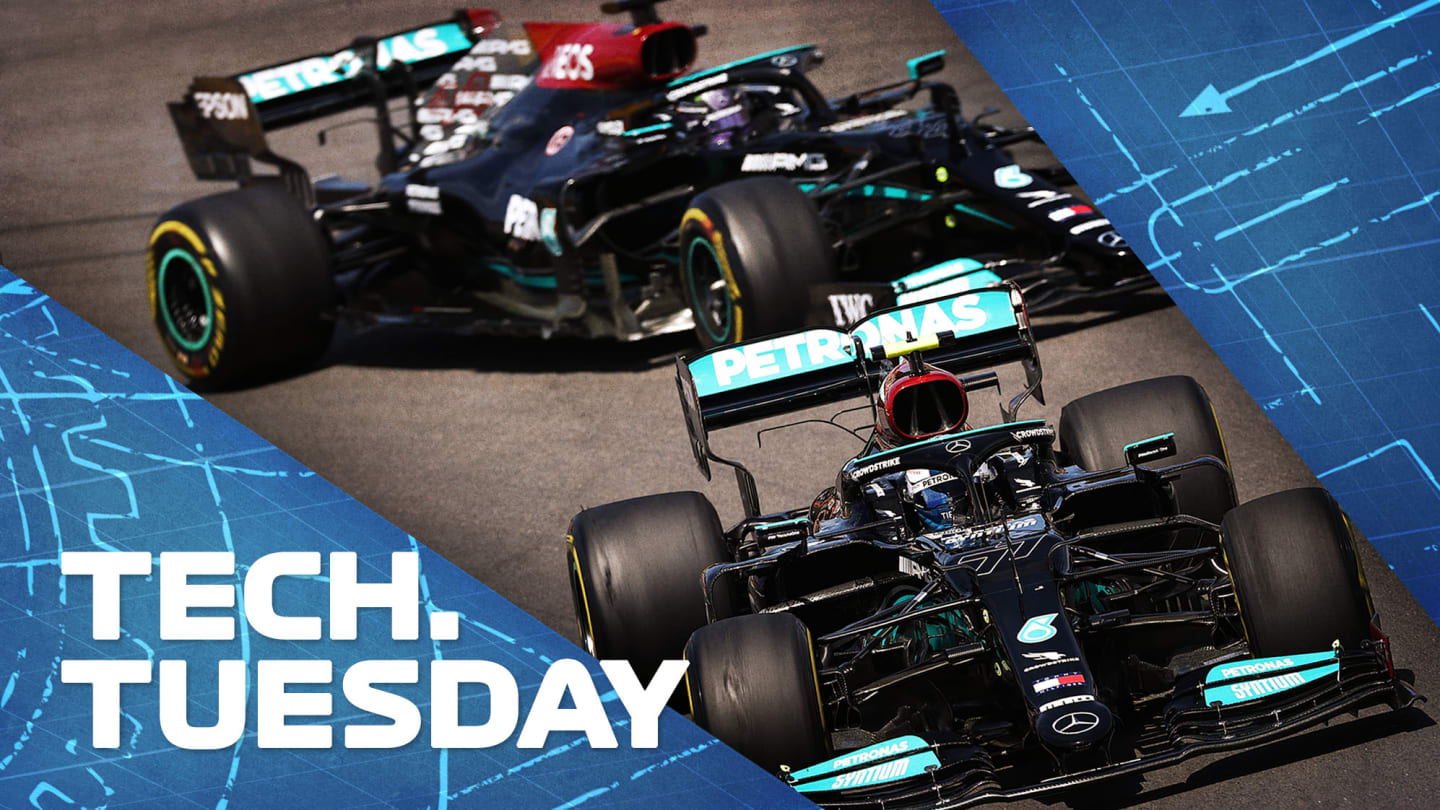
Technical
TECH TUESDAY: The key developments that helped Mercedes win their 8th constructors’ title

Share

Mercedes faced their biggest challenge of the hybrid era in 2021 from both an energised Red Bull-Honda and a regulation change which impacted disproportionately on Merc’s low-rake aerodynamic philosophy.
In the first part of the season, Mercedes were more often than not playing second fiddle to Red Bull, winning only three of the first nine races, with Red Bull taking the remaining six, including five in succession from Monaco to Austria.
TECH TUESDAY: How Red Bull and Honda cleverly transformed 2020’s RB16 into the title-winning RB16B
The turning point came at Silverstone, in more ways than just the infamous Lewis Hamilton/Max Verstappen crash. The British Grand Prix also marked the technical fulcrum of Mercedes’ season too, as a powerful upgrade allowed them to maximise the advantages still inherent in the low-rake concept, but which the regulation changes had made difficult to access.
From Silverstone onwards, Mercedes were in the ascendent and on pure performance should really have won more than six of the remaining 13 races. Qualifying told a more representative story, with Mercedes on pole for eight of the 13 races from Silverstone, Red Bull only four times.
Here then is the Mercedes technical story of ’21...
MERCEDES’ RESPONSE TO THE REGULATION CHANGE
In terms of basic design, the team’s response to the regulation floor/diffuser/rear brake duct restrictions while retaining the same chassis was:
-
A further revised rear suspension to create yet-more airflow volume around the exterior of the diffuser.
-
The introduction of the Z-floor edge which would come to be widely copied.
TECH TUESDAY: The banned features that will make a big impact on 2022's wheel-to-wheel action
The development token spend allowed between the 2020 car and that of ’21 was around the nose of the car, but was for a feature which was never used, the assumption being it brought no advantage.
There were significant upgrades to the power unit too, though these were unconnected to any regulation change.
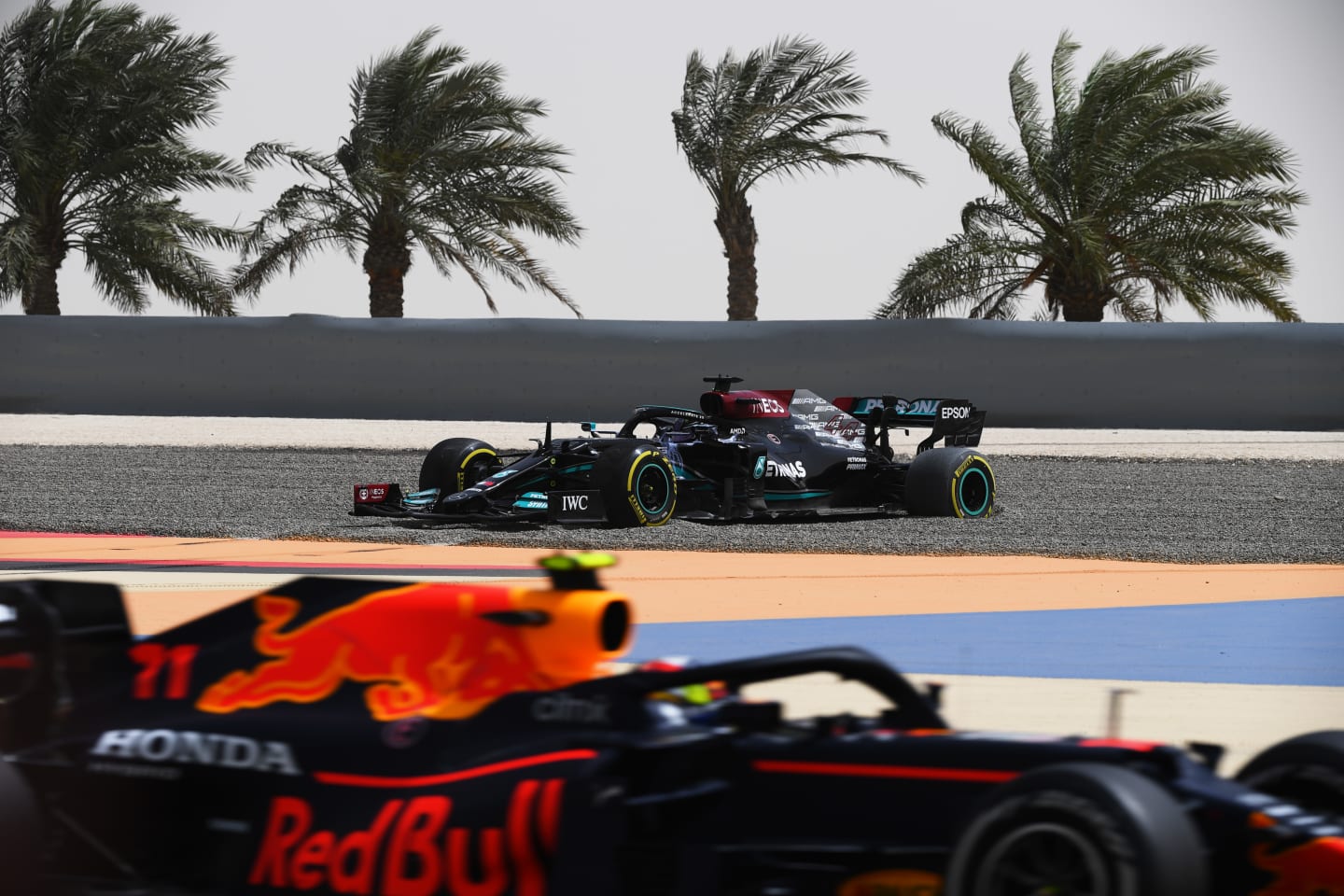
Mercedes struggled more than Red Bull with the regulation change
Rear suspension
In 2020, Mercedes found big aerodynamic gains from sweeping the rear suspension very far back, by mounting the forward lower wishbone into the crash structure rather than the gearbox, as is conventional. This was a feature copied by Red Bull on their ’21 car. Mercedes went even further on their own ‘21 car, the W12.
The lower wishbone links were no longer conjoined but separate. This allowed the rear link to be mounted even further back and slightly higher, causing less disturbance to the airflow through the bodywork coke bottle section. It helped in trying to reclaim the rear downforce lost to the regulations.
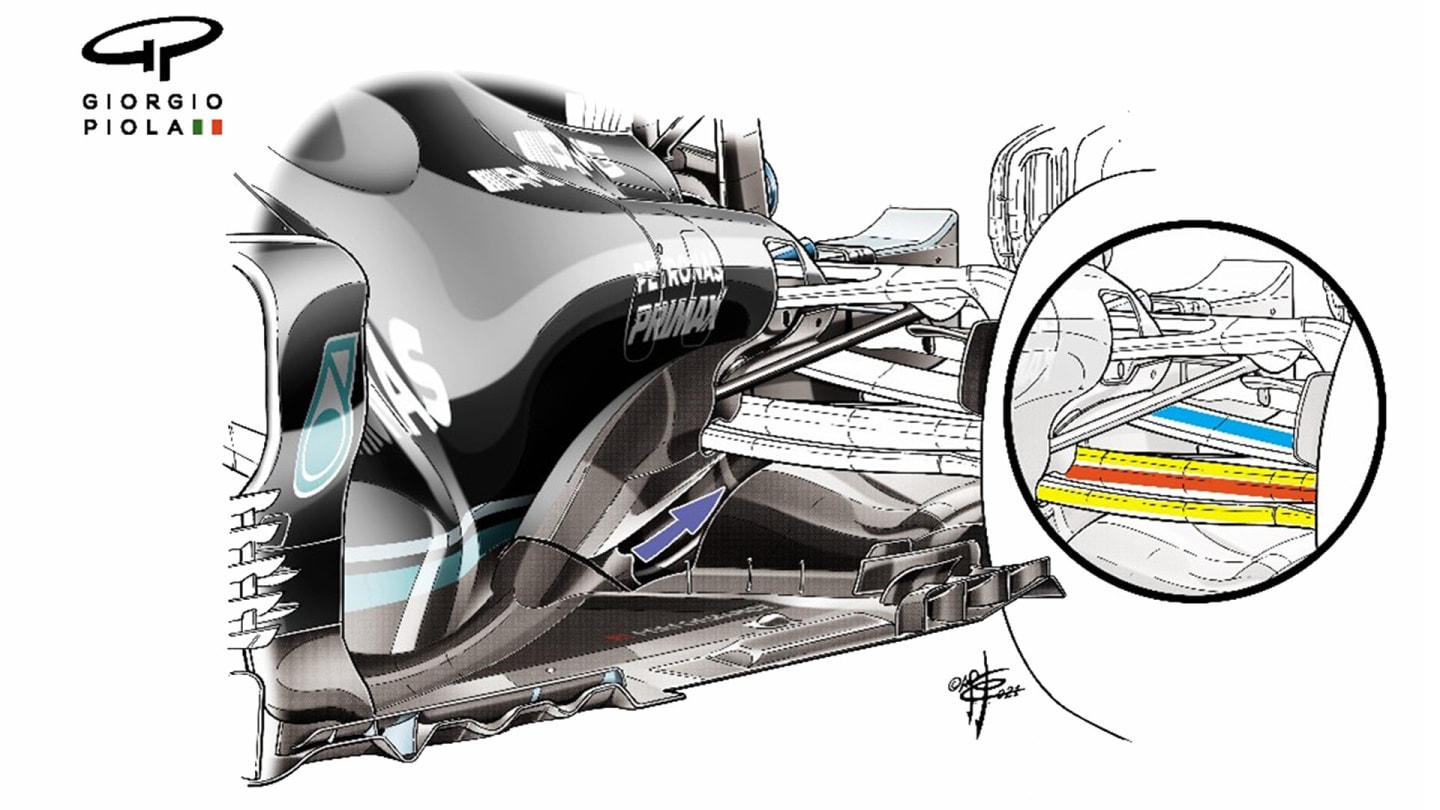
In yellow above are the lower wishbone links of the rear suspension, now separated and not constricting airflow across the coke bottle profile (blue arrow)
Z-Floor
To compensate for the ’21 banning of the louvres and slots in the floors which had previously helped seal the underfloor by inducing vortices on its outer edges, Mercedes came up with a Z-shape cut-out part-way down the length of the floor which surrendered some floor area in exchange for tripping the air to create the desired vortices.

The yellow section shows the floor area surrendered in creating the Z-floor
This and the wave-shapes immediately ahead of the Z worked in conjunction to trip the air into spinning and flipping beneath the floor edge. The Z-floor ended up being featured on every car, but it appeared first on the Mercedes.
TECH TUESDAY: What is the ‘Z-shaped’ floor solution – and why are more and more teams using it?
On the W12 it wasn’t enough to fully reclaim what the slots had been doing, and for the first few races the Merc had a significant rear downforce shortfall, at its most obvious in the opening race in Bahrain, where the car just did not have the corner entry rear stability traditionally seen in cars from this team.
It was believed that the changes had hurt the low-rake concept of the Mercedes harder than rival high-rake designs, particularly since the diffuser and rear brake ducts – both of which had been restricted in the length of their vanes – were physically further apart on a low-rake car. On the high-rake car, the diffuser rises up with the car on its suspension to be closer to the brake ducts.
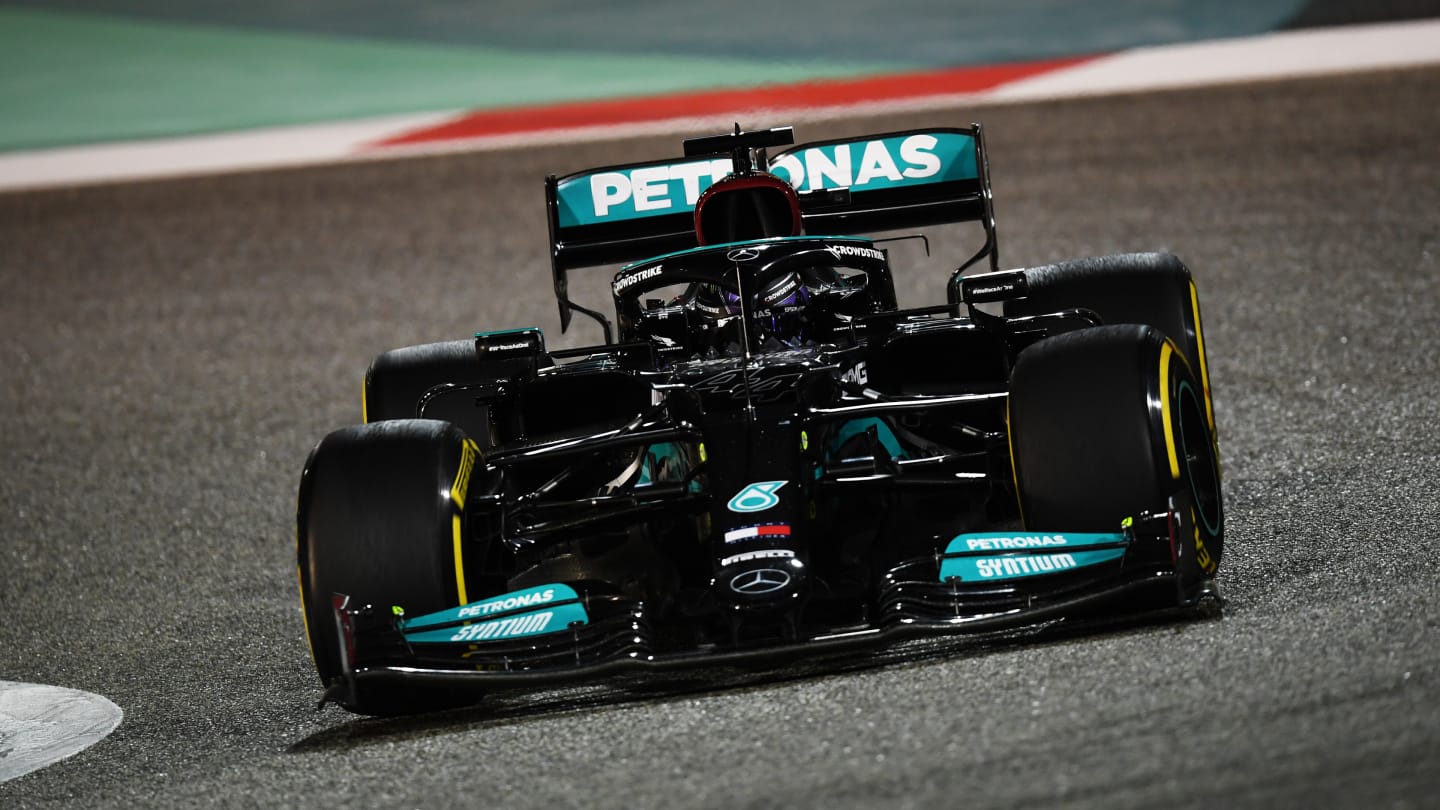
The W12 lacked Mercedes' signature rear stability in Bahrain
The airflow link between the two components was a powerful tool in energising the airflow around the diffuser and therefore the downforce created by the underfloor.
For the remaining races between Bahrain and Silverstone, the team were making detail changes to the barge boards and diffuser edges to get around the basic rear end limitation and new set-ups were developed around the shortfall to make the car more driveable.
Behind the scenes though, work was ongoing on the big planned upgrade, which would debut at Silverstone.
THE SILVERSTONE UPGRADE
Visibly, the Silverstone upgrade was less dramatic than its effect. There was a reworked barge board, a reprofiled floor edge and re-angled deflectors around that whole lower area ahead of the sidepods.
Their aim was to divert some airflow headed for the underbody around the lower flanks instead. Why would an aero team be seeking to reduce the airflow mass to the underbody, when underbody downforce is around four times more drag-efficient than rear wing downforce? Because this was about inducing the diffuser to stall more completely at high speeds when the car sank down on its rear suspension.
TECH TUESDAY: Mercedes' last big 2021 upgrade that helped Hamilton to Silverstone victory
TECH TALK: Mercedes' rear suspension movement explained
All teams use diffuser stall to an extent. As a car’s speed increases, the downforce acting upon it increases by the square of the speed increase. As the rear of the car is forced down on its suspension by the downforce, a point is reached where the diffuser’s expansion angle is low enough that there is no longer enough of a pressure differential between the air beneath the flat section of the floor and that beneath the diffuser for the diffuser to keep working.
Effectively it stalls, losing the car a lot of downforce but also the associated drag. The speed at which it does this can be tuned with rear ride height and suspension settings.
VOTE: What was your favourite race of 2021? It's time to pick the best Grand Prix of the season
It can also be tuned by how much airflow mass is being fed to the underfloor. The stall point will be easier to reach the less airflow mass is going through the floor. Hence the Silverstone upgrade diverting some airflow away from the floor.
With a rear suspension geometry which locks into a lower position once beyond a pre-set threshold of load and which only unlocks once a different (lower) threshold is reached, the car can be induced to lose a lot of drag at high speed but still have good downforce at the speeds required for the corners. This is what Mercedes had.
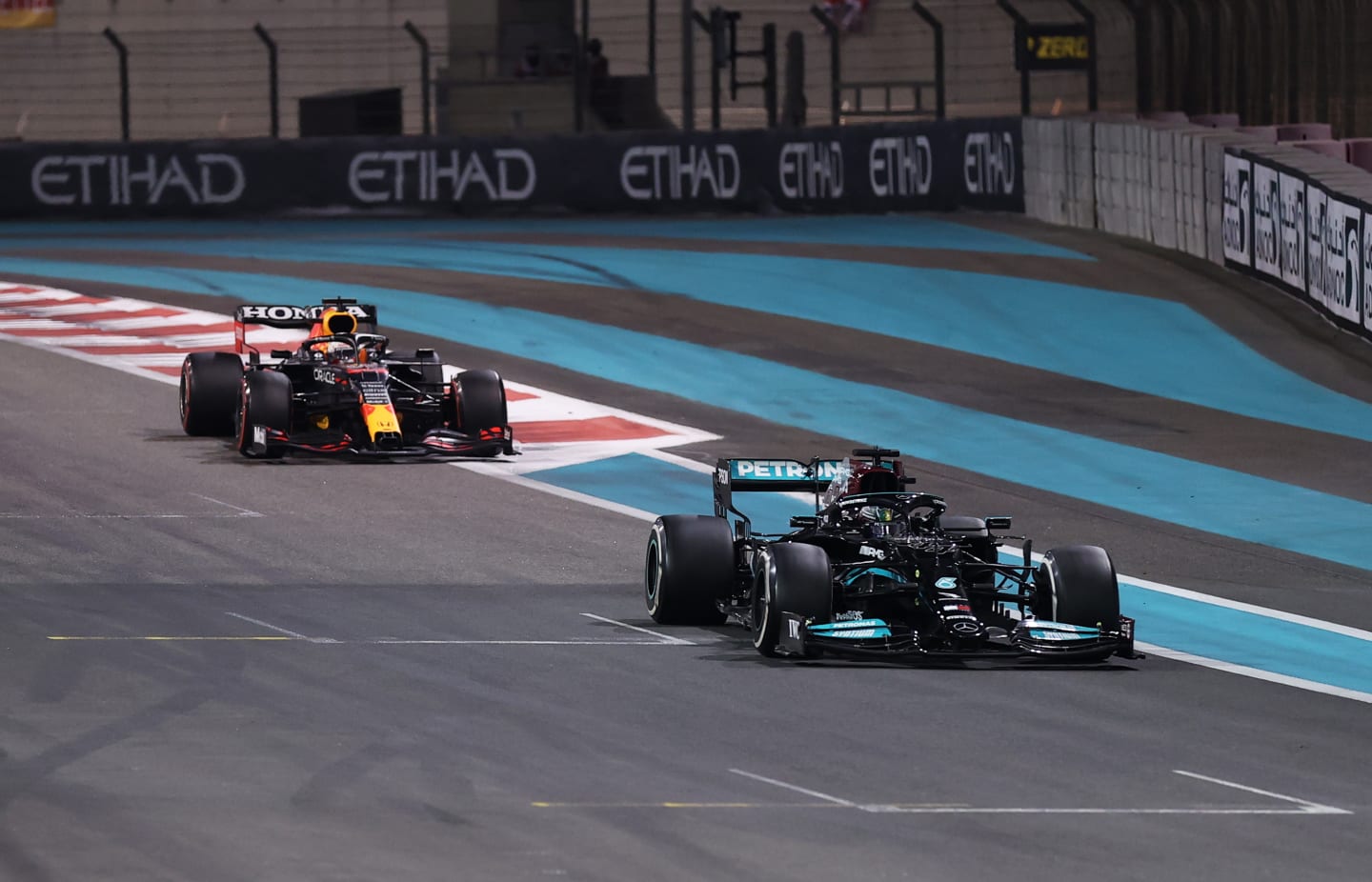
Mercedes had Red Bull licked in terms of straightline speed after Silverstone
The suspension system had long been in place but the Silverstone upgrade allowed the diffuser stall to be more effective. It allowed Mercedes to use bigger wings and more rake to create more downforce, knowing that the usual drag penalties for that would be overcome by the diffuser stall and the associated suspension sink.
For the rest of the season, Red Bull could not approach the Mercedes straightline speeds, while their corner advantage was greatly reduced. That was the essence of the different competitive picture between the two cars pre and post-Silverstone, one which was only enhanced in between Mexico and Brazil as Mercedes found a much better set-up which allowed Hamilton to extract more from the car.
TECH TUESDAY: Was Hamilton's Sao Paulo stampede all down to that new Mercedes engine?
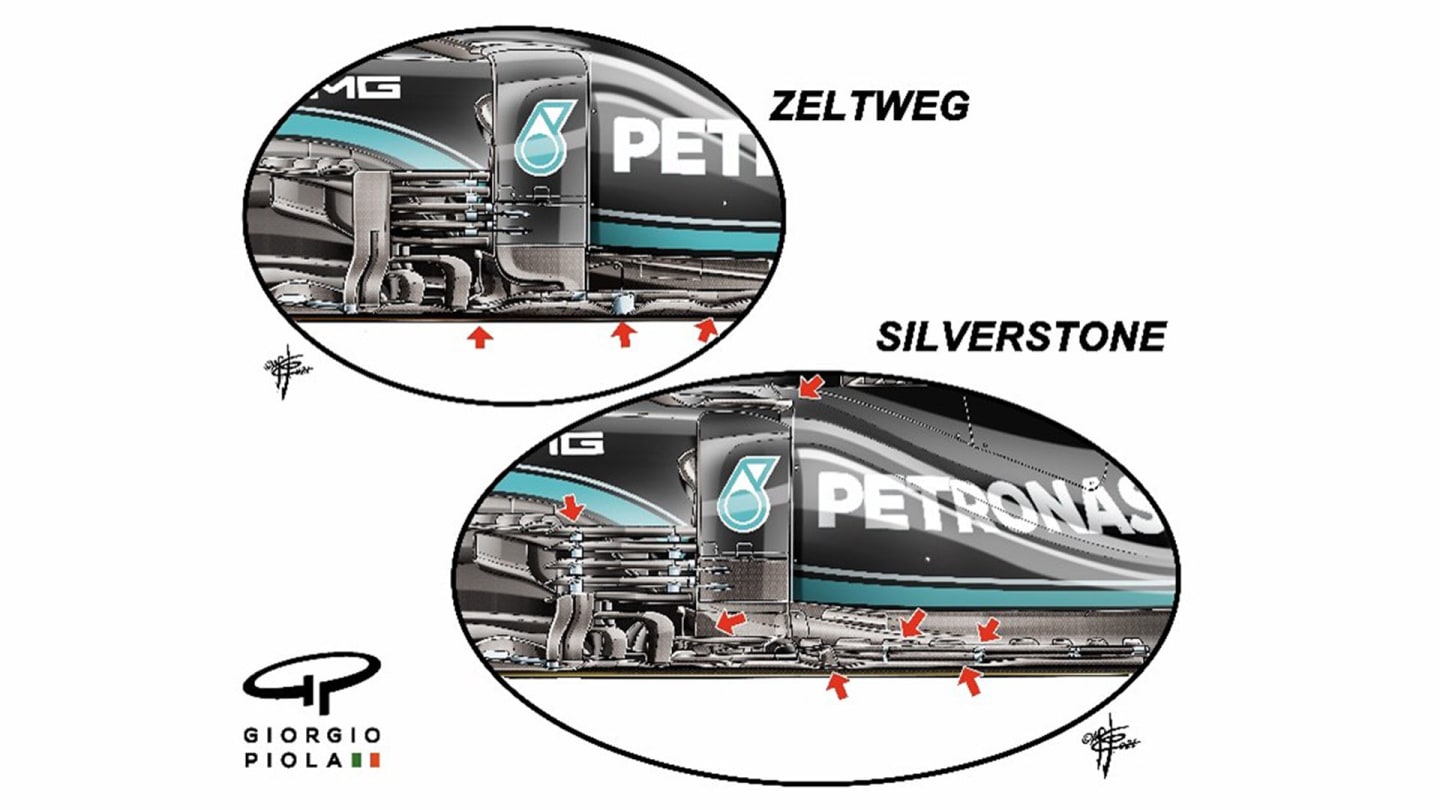
The latticework around the barge boards (above) was changed, as was the floor edge shape, notably around its leading edge. The aim of these combined changes was to reduce the airflow mass to the underfloor and divert some of it around the outer bodywork. This would normally be counter-intuitive to achieving more efficient downforce, but was done to facilitate greater diffuser stall on the straights.
Overall, those changes were enough to allow Mercedes to take an unprecedented – and at times it seemed, unlikely – eighth straight constructors’ crown.
YOU MIGHT ALSO LIKE
News ‘Everything went wrong’ – Verstappen rues problems after P6 in Bahrain as he reflects on ‘tough’ situation for Red Bull
News FIA post-race press conference – Bahrain
News Hulkenberg disqualified from Bahrain Grand Prix over skid block breach
News DRIVER OF THE DAY: Hamilton's aggressive drive to P6 in Bahrain gets your vote

